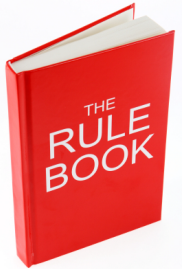Seniors that have hit hard times may be forced to make a difficult decision. Do they sell their investments to stay afloat or should they tap into their home equity? If they are considering tapping into their home equity, the rules regulating reverse mortgages have recently changed for the better. Find out if a reverse mortgage is an option you should consider.
 What is a reverse mortgage?
What is a reverse mortgage?
This type of home equity loan provides the homeowner with a lump-sum cash payment or a credit line that adds to the principal of outstanding debt, but does not need to be repaid until the borrower dies or sells their home. Unlike a traditional home equity loan, in which the interest and principal payments must be paid on a monthly basis, a reverse mortgage allows the borrower to defer payment until a triggering event. It’s important to note that the existing mortgage must be fully paid off to obtain a reverse mortgage as it’s a first lien loan product. If you’re worried about taxes, reserve mortgages are only taxable to the holder if they don’t repay the mortgage.
What are the new rules?
Most of the new changes require the lender to conduct a more thorough analysis of the applicant’s income/assets. This includes a review of the applicant’s current income or assets, current employment status, credit history, the monthly payment for the mortgage (based on the highest interest rate if it’s an ARM) and their monthly debt payments (including the mortgage) compared to their monthly pre-tax income. The applicant will need a debt-to-income ratio of less than 43% to obtain a qualified mortgage. The term of the loan cannot exceed 30 years, and the points and fees paid by the borrower cannot exceed 3 percent of the total loan amount. Qualified mortgages also cannot have risky features such as an interest-only period, when the borrower pays only interest without paying down the principal.
What is the biggest drawback for getting a reverse mortgage?
One of the biggest drawbacks of a reverse mortgage is the price the borrower has to pay. This includes a large upfront payment that can be well over $5,000 to $10,000. In addition, interest rates are typically higher than for a traditional home equity loan since the borrower doesn’t pay interest until a triggering event occurs.
Does a reverse mortgage make sense for retirees?
There may be several instances in which a reverse mortgage can be very useful for a retiree with limited cash flow. Typically, it’s best used in cases when the borrowing costs are low and the market falls. This can be very attractive when considering the alternative of selling 401(K) or IRA investments and paying taxes for those sales while also bumping up your adjusted gross income.
More questions? Ask your reverse mortgage questions or find an accountant online.
Related Articles
->Is It Risky To Use A Mortgage Broker?
->Do You Recommend Variable Universal Life Insurance?
->How Can I Take Out The Cash Value From My Life Insurance Policy?
->It Is Not Too Late For Retirement Planning In Your 50s
->Should A Retiree Apply For A Mortgage For Investment Purposes?
->How Much Should I Withdraw From My Retirement Account Annually?


